Ever asked yourself, “what do trains run on?” Weel, trains used to run on steam power with the use of wood, coal, or oil. With the advancement of rail technology, this developed into diesel-electric, gas-turbine, and electric power.
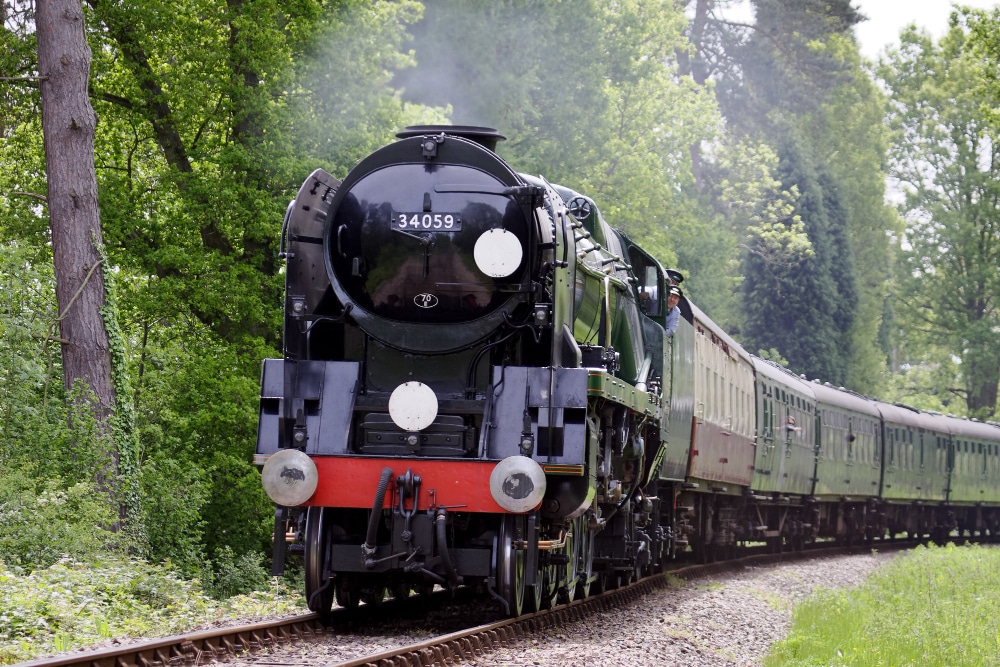
Ever since the introduction of trains, there have been surrounding controversies about their impact on our climate.
Along with the advancement of technology, we’ve also seen progress in how trains run.
Many freight trains still use diesel power to fuel long-distance hauling. However, most passenger trains now use electric power for a better power-to-weight ratio.
So, what do trains run on and how do they differ from one another?
What Do Trains Run On?
Trains used to use steam power from coal, wood, or oil as fuel to power locomotives.
By the 20th century, trains used diesel-electric and electric power and still operate like this today.
However, there are a lot of differences in the modes of power that trains use. They differ on how they pick up current and what fuel they use the train to move.
Let’s dive deeper into the different modes of power to move these fantastic pieces of machinary.
Steam Power Locomotives
Steam locomotives are the first mode of power that trains used, dating back to 1812. This mode of power can work using either coal, wood, or oil-fed into an engine.
As the need for larger locomotives grew, steam technology developed as well. This started the peak of train transportation and further developed into the 20th century.
Although the steam locomotive was the best invention in that era, it still had a couple of downsides. Two of which were that it uses complicated machines to run and it needs a lot of manpower to start the steam and move the train.
Compared to coal and wood, oil-fired steam locomotives were the favorite use by many railroad associations.
Oil-Fired Steam Locomotives
Oil-fired steam locomotives became popular among associations because it was more efficient to work on compared to coal. Like coal, the oil needs to be heated for steam to be generated and to power the train.
In comparison, it’s easier to fill oil on engines compared to coal where you have to feed into the engine’s firebox. This is a manual process and involves a lot of tough manpower.
However, in the late 1920s, oil-fired steam rose to popularity and it became a commodity for many automotive productions.
How Does a Steam Locomotive Work?
A steam locomotive consists of many different parts and mechanisms that need to work as one for better fuel efficiency.
For a steam locomotive to work, a person should ignite a fire inside the train engine’s boiler. When the pipes inside the boiler start to heat up, the water inside will create steam. Once there’s enough steam, power is forwarded to the driving wheels and cylinders that turn the side rods and the wheel.
There are instances when the steam from wood, coal, or oil moves to a locomotive railcar, which is called a tender. Other times, the coal itself is carried in different compartments inside the locomotive. You’ll often find these situations during light duties such as yard switching.
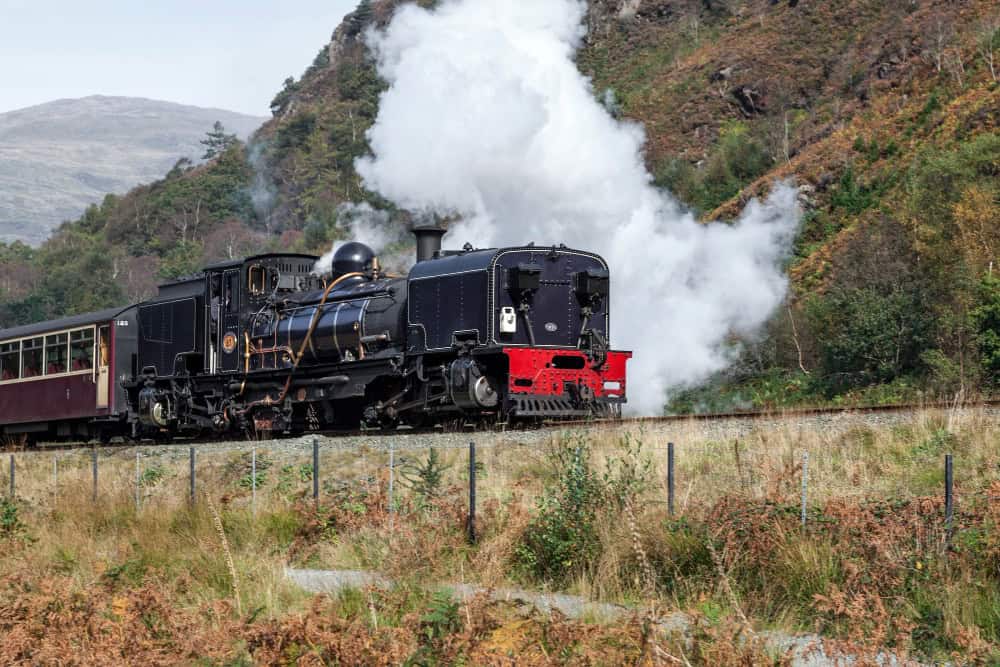
Diesel-Electric Power Locomotives
Diesel-electric power was first experimented with in 1917-1918 but wasn’t further used until the 1930s.
The Electro-Motive Division’s (EMD) E-series locomotives were the first successful diesel-electric powered locomotives. They came with a six-axle locomotive that is built as a passenger train. Because of the successful streamlining of E-units, diesel-electric power locomotives were welcomed to different railroads.
By the 1940s, the manufacturer released the F-series. This series had four axles that were slated in their primary freight traffic. Later on, the F-series locomotives were further used on high-profile trains.
How Do Diesel-Electric Power Locomotives Work?
Compared to steam power, diesel locomotives are equipped with a prime diesel mover that can generate the current needed to power electric traction motors.
Diesel locomotives are more efficient and cost-effective compared to coal since they consume less fuel and require lesser manpower. Additionally, because they use electric power to move, one crew can operate multiple trains all at once.
In today’s world, diesel locomotives are very common. You can find this in both freight and passenger trains.
Other benefits you’ll find in diesel-electric power locomotives are the following:
- Lighter compared to steam power
- Produce less wear and tear on the train’s infrastructures such as ties, roadbed, and rails
- Cost less to build including its maintenance
- Diesel is more readily available in the market
- Fuel efficient compared to steam
Steam locomotives require so much maintenance that they spend almost half of their operating life being repaired. Also, with a single gallon of fuel, a diesel-electric locomotive can travel 134 miles.
Furthermore, want to check out a great Diesel-Electric train journey, try the Amtrak Cardinal.
What Kind of Diesel Do Trains Use?
Both freight and passenger locomotives use ultra-low sulfur diesel fuel (ULSD). This type of fuel has a sulfur content of up to 15 ppm (parts per million).
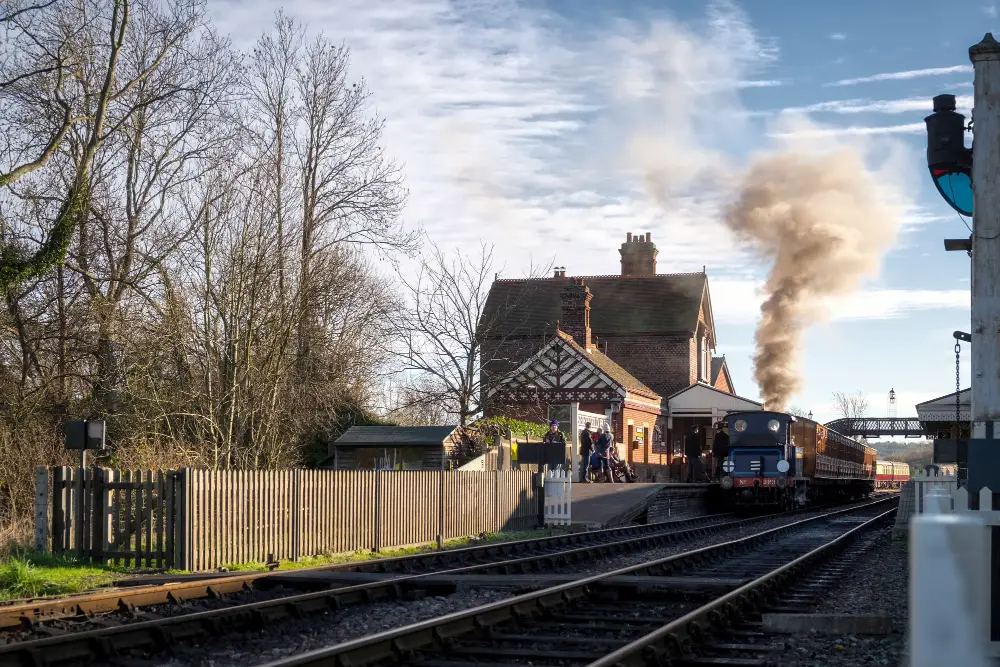
Gas-Turbine Power Locomotive
France first developed the gas-turbine power locomotive during the 1940s (almost the same period when diesel-electric power locomotives were created).
Like diesel locomotives, gas-turbine power uses a gas-turbine system to power the traction motors. However, even if a gas turbine works almost the same way as diesel locomotives, it’s far less fuel-efficient. Because of this, gas-turbine power locomotives were short-lived.
North America also tried to develop gas-turbine locomotives for their Union Pacific trains. But, like France, they recorded that this method is more expensive compared to diesel locomotives.
By the 1960s, no freight locomotives using gas-turbine power were operated. However, passenger service trains adopted gas-turbine power in the 1970s.
Some of the trains that used gas-turbine power in North America are the following:
- TGV001 prototype
- UAC Turbotrain
- Amtrak’s RTG and RTL Turboliners
These trains were later used in Eastern Canada and the Midwestern and Eastern United States.
The United Kingdom also developed its gas-turbine locomotives for its Advanced Passenger Train Experimental (APT-E) trains in the 1970s. This was influential because it introduced high-speed trains around the world which included tilting technology for the cars for it to effectively use the British Rail Network.
Soon, the APT-E was able to travel through the tight turns of the rail network at high speeds compared to conventional trains. However, bringing the APT-E commercially means upgrading Britain’s existing infrastructure which could be costly.
By the 1970s, the oil crisis happened and the project for the gas turbines was converted to electric traction. Now, gas turbine power is almost extinct in both freight and passenger trains worldwide.
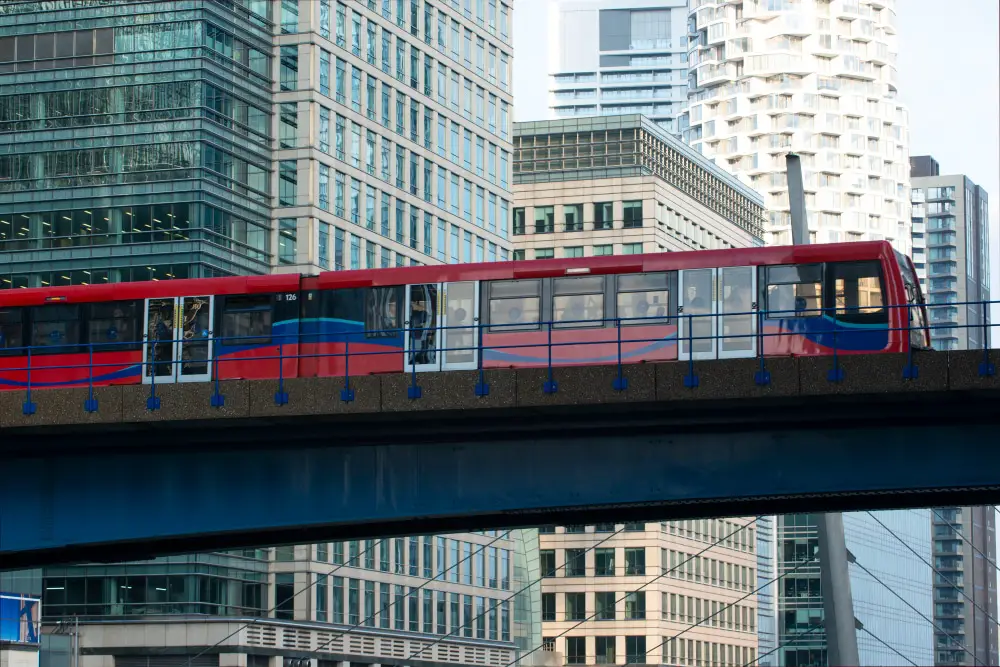
Electric Power Locomotives
Electric power locomotives saw their peak worldwide in the early 20th century.
In the United States, electric trains first started in 1910 when there was a commencement operation on the Hudson River Tunnels for the Pennsylvania Railroad’s Philadelphia-New York mainline. With the length of the tunnels, a steam locomotive couldn’t be used.
Because of this, the PRR developed its first-ever DD-1 electric locomotive to run the trains through the vast tunnel. Later on, electric trains were used everywhere on high-speed projects including the PRR’s multiple mainline. They developed the GG1 locomotive which was built by General Electric.
In 1964, Japan opened its Shinkansen which operated through the Tokaido line. This project has been a huge success making high-speed trains more popular throughout the world and influencing France’s TGV which started in 1981. This line traveled through the Sub-Est line going to Lyon and Paris.
High-speed rail and electric trains became inseparable. Both offer the best power-to-weight ratios, are fuel-efficient and easy to maintain.
How Do Electric Power Locomotives Work?
Electric power locomotives work by collecting the current from overhead power lines or either AC or DC third rail. The current enters a transformer that is forwarded to a rectifier which converts the power to current. The AC or DC is then forwarded to the train’s inverters which send back the current to another alternating current.
These forwarding currents then power the traction motors that power the wheels of the train. For any unused current by the train, it’s forwarded back to the power lines, which in turn, increases the overall efficiency.
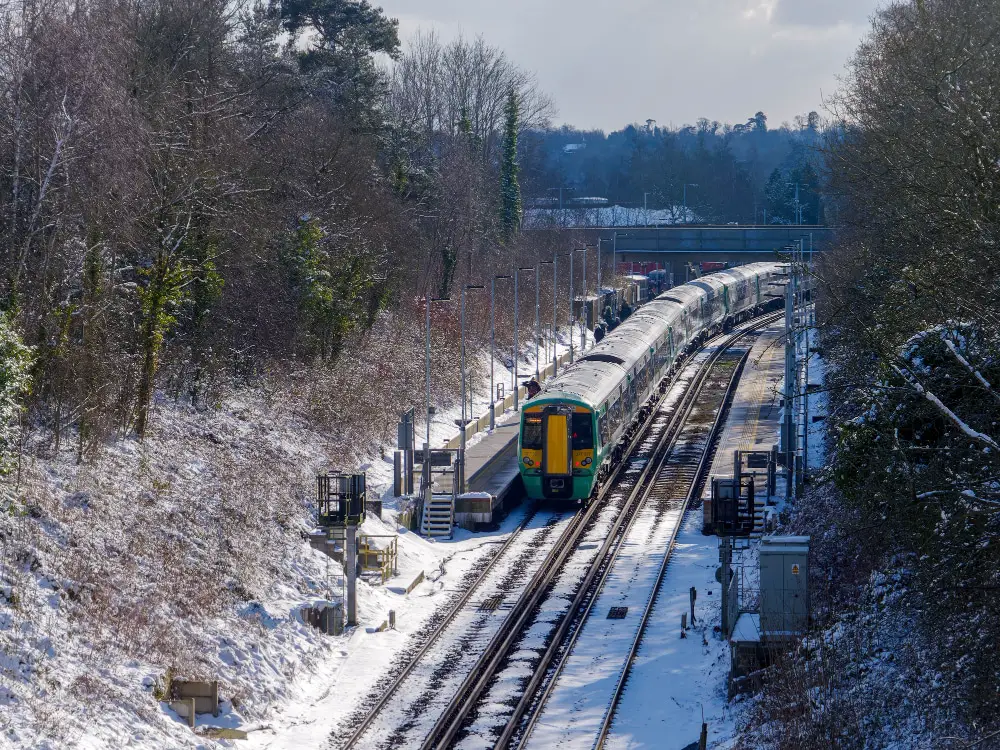
What Do Trains Run On? – Conclusion
In the 1800s, trains ran on steam power with the use of either coal, oil, or wood. With the advancement of railroad technology, it developed into diesel-electric, gas-turbine, and electric power.
Today, many long-haul freight trains still use diesel-electric as their mode of power. While most passenger trains now run through electric or diesel-electric power, steam does still exist!
Furthermore, if you get the opportunity, go for a ride on an old steam train, there is nothing like it!
Happy Travelling!

